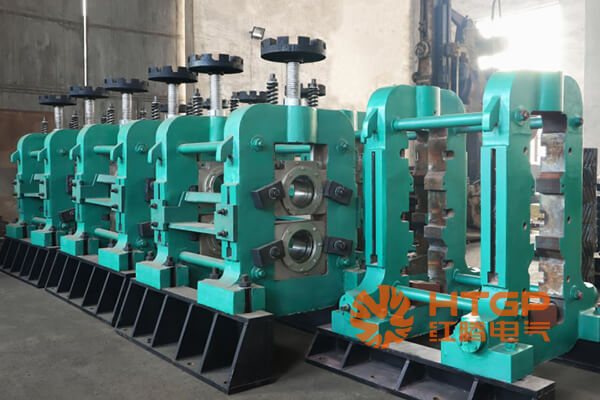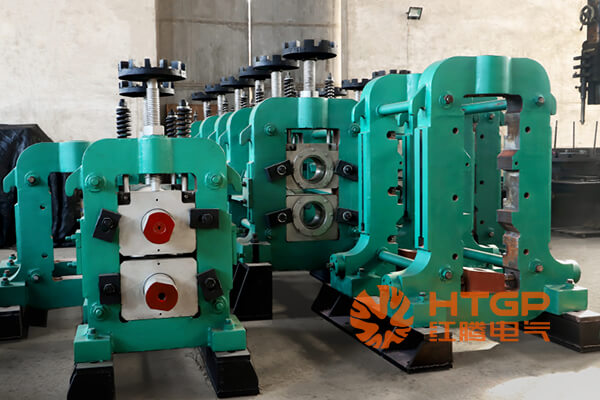Common Faults and Solutions for Hot Rolling Mill Stands
The hot rolling mill stand is an important part of the hot rolling mill production line. It is used to support and fix the rollers and transmission devices of the hot rolling mill to ensure the stability and safety of the hot rolling mill during high-speed operation. Hot rolling mill stands are usually made of high-strength materials, such as cast steel, cast iron, etc., to withstand high temperatures, high pressure, and heavy-load working environments.
Structure of Hot Rolling Mill Stand
The structural design of the hot rolling mill stand needs to take factors such as rolling force, rolling torque, rolling speed, rolled piece size, and thermal expansion into consideration to ensure that the stiffness and strength of the stand meet the requirements. At the same time, the rack also needs to have good heat dissipation performance to prevent thermal deformation and thermal stress caused by high temperatures.
In the manufacturing process of hot rolling mill stands, advanced casting, processing, and welding technologies are required to ensure the dimensional accuracy and surface quality of the stands. In addition, strict inspection and testing are required to ensure that the performance and quality of the rack meet standard requirements.

Some problems may occur during the operation of the hot rolling mill stand. Today, we will introduce you to some common problems and their solutions.
The bottom surface of the rack arch is worn
Cause of failure: This is usually caused by corrosion and wear during long-term service.
Solution: In the past, online machining was often used to repair, but this method is only a temporary solution because the surface of the arch will still be corroded and worn after some time. A better solution is to use polymer composites for repair. This material has excellent adhesion, compressive strength and impact resistance. It can be firmly attached to the surface of the metal substrate, absorb the impact of the bearing seat on the arch, and avoid wear and tear.
The gap between the machine stand and the roller-bearing seat is too large
Cause of failure: This may be because the rolling cooling water atomizes rapidly when it encounters the red-hot steel billet, entraining the iron oxide powder that falls off the surface of the steel billet and sprays it around. The roller passes through the bearing seat and causes a large impact on the stand arch, resulting in the gap exceeding the administrative limit.

Solution: Besides using the polymer mentioned above composite materials for repair, the gap between the stand and the roll-bearing seat should also be regularly checked and maintained to ensure that it is within the normal range. In addition, optimizing the rolling process and reducing the iron oxide powder produced during the rolling process can also reduce the impact on the machine stand.
Hot Rolling Mill Stand stiffness reduced
Cause of the failure: It may be that the stiffness of some parts of the rolling mill (such as the F6 rolling mill) is reduced, resulting in large stiffness deviations on both sides of the rolling mill and abnormal stiffness curves.

Solution: Components with reduced stiffness should be repaired and replaced in time. At the same time, conduct regular inspections and maintenance on the entire rack to ensure its stiffness is within the normal range.
The above are the faults and solutions to common problems of hot rolling mill stands. The hot rolling mill stand is one of the key components of the hot rolling mill. Its design, manufacturing, and quality control have an important impact on the performance and service life of the hot rolling mill. In actual operations, analysis and processing should be carried out according to specific conditions to ensure the normal operation and production safety of the hot rolling mill.

